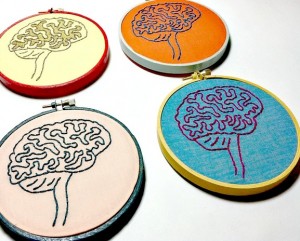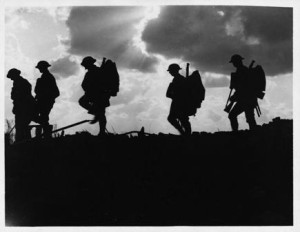
Today you are reading the remnants of what was to be a grand and enlightening piece about soldiers with brain injury.
You might ask – Well what happened?
[unordered_list style=”green-dot”]
- You can see the beginning last week in a “Rant for Remembrance Day”.
- It was much, much, bigger and more complex than I thought. Brain injury – Post traumatic stress disorder – shell shock – the circumstances of war.
- It was more emotional and difficult than I thought. The human stories, the lack of support for veterans – anger, sorrow, guilt, disbelief, horror and more.
- I kept doubting I could. The more I read, the more I wondered – What did I really know about soldiers with brain injury and their lives?
[/unordered_list]
You might then ask – Why did I keep going?
[unordered_list style=”green-dot”]
- I was learning so much and I wondered if sharing what I found might interest other people.
- My belief that this story needs to continue to be told in different ways, in different places, in the hope we all decide things need to improve for veterans of war.
- To acknowledge the struggle of soldiers with brain injury; past and present.
[/unordered_list]
What follows here is not the well strung together, literary masterpiece I imagined. It is more a patchwork quilt of learning about soldiers with brain injury. There are links to people with more knowledge than I, that I hope you will find informative. This is only a beginning there is so much more available.
What Did I Learn About Soldiers With Brain Injury
Like traumatic brain injury in the general population, soldiers with brain injury, and other injuries of war, are predominantly “young and healthy” when they set out.
“We are working with a population that tends to be young and healthy going into this, so they’re really in a good position to recover,” French said. “But complicating things, these people have been hurt in complicated and terrible ways. Certainly, if people get even a mild TBI under circumstances of extreme stress,” especially if it is accompanied by other injuries, “that might well affect the outcome.” Louis M. French, a neuropsychologist, in an article Traumatic Brain Injury in the War Zone
I learned about Ivor Gurney, a composter of music who went off to war –
You can listen to one of Ivor Gurneys compositions as you read on by clicking on the link below:
Ivor Gurney – A composer of music, writer of poetry and a soldier in World War I.
His story highlights a familiar difficulty amongst returning veterans: Was it shell-shock, and/or brain injury and/or post traumatic stress disorder and/or mental illness?
And does a diagnosis matter as much as providing the appropriate treatment and support for life?
It is reported Ivor had episodes of mental illness before the war. During the war he was shot in the arm, hospitalised, and returned to fight. Shortly after this he was gassed, hospitalised and returned home permanently. Later after becoming increasingly unwell, he was institutionalised in the London Mental Hospital in 1922 and died there in 1937. A timeline of his life is available HERE on the Ivor Gurney site.
I learned about the history of soldiers with brain injury –
From ancient history evidence of damage to the brain inflicted by weapons has been found:
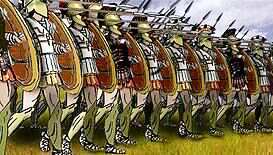 Prior to 1500BC, through archeological studies of skulls “in Europe, The Americas, Africa, and the South Pacific”. (pge 144 McCallum J, 2008).
Prior to 1500BC, through archeological studies of skulls “in Europe, The Americas, Africa, and the South Pacific”. (pge 144 McCallum J, 2008).
A physician recording on a paprus in approximately 1500BC describes traumatic brain injury in soldiers. (pge 144 McCallum J, 2008)
McCallum, J.E. “Military Medicine From Ancient Times to the 21st Century” ABC-CLIO Inc. Santa Barbara, 2008
I learned about soldiers with brain injury from major wars throughout modern history-
The Defense Centers of Excellence for Psychological Health and Traumatic Brain Injury (DCoE) provides resources including a useful timeline of the history of American soldiers with brain injury through civil and world wars. In other wars:
Crimea and American Civil War: “Mortality from penetrating head wounds in the Crimean and American Civil War was 73.9% and 71.6% respectively.” (pge 145 McCallum J, 2008)
World War I: 100 years ago many countries were involved in World War I. In Britain alone approximately 200,000 men were diagnosed with shell shock. Three years after the war it is reported that 15,000 men were still in hospital in Britain with shell shock.
World War II: Then 70 years ago, (22 years after World War I), another major war, World War II. Here advances in neurosurgery, and new streams of psychology and psychiatry from treating soldiers with “shell shock” and brain injury from both major wars evolved.
Vietnam war: studies of the 58,000 US combat fatalities in the Vietnam War, show that about 40% were due to head and neck wounds.
Iraq and Afghanistan: US military “a total of 134,476 brain injuries were reported. It should be noted that these numbers are limited to those that presented to the military health care system.”
“Studying Injured Minds” – The Vietnam Head Injury Study and 40 Years of Brain Injury Research” This article provides a history of traumatic brain injury in soldiers from World War I onwards, including a 40 year longitudinal study of veterans with traumatic brain injury after the Vietnam war.
I learned a bit about civilians and soldiers acquiring brain injury in conflicts across the world –
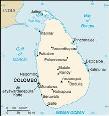 Traumatic-Brain-Injury-in-Sri-Lankan-Combat-Veterans:
Traumatic-Brain-Injury-in-Sri-Lankan-Combat-Veterans:
Of 824 Sri Lankan army service personnel referred to a psychiatric ward after the civil war in Sri Lanka 29 or 3.51% were found to have brain injury.
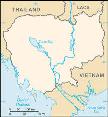 Survivors of mass violence in Cambodia (by Richard F. Mollica, MD, David C. Henderson, MD and Svang Tor, BA):
Survivors of mass violence in Cambodia (by Richard F. Mollica, MD, David C. Henderson, MD and Svang Tor, BA):
The psychiatric effects of traumatic brain injury in Cambodian survivors of mass violence concluded that brain injury was a common occurrence and had strong associations with depression and post traumatic stress disorder.
I learned about Shell Shock in World War I
I found the following video useful in gaining an understanding of the impact of trauma and war on human beings. What men saw and experienced.
Powerful and graphic it provides a disturbing, but very human account of shell shock, and the difficulty of treating disability without apparent cause, in huge numbers of soldiers in World War I.
As I watched horrified at the treatment of those men, I wondered how history will view our current treatment and support in the future.
PLEASE NOTE THIS VIDEO DOES HAVE DISTRESSING AND GRAPHIC SCENES.
The article “Shell shock, Gordon Holmes and the Great War” (by Macleod D, FRANZCP FAChPM, Journal of the Royal Society of Medicine. Feb 2004; 97(2): 86–89.) focusses on neurologist Gordon Holmes who was engaged by the British army:
- It provides insights into the short term treatment provided. Focussed on getting men back fighting.
- It highlights the overwhelming numbers of men who had damage to their brain, stress disorders, shell shock etc.
I learned about ‘Blast injuries’ and the link with ‘Shell shock’ of the past
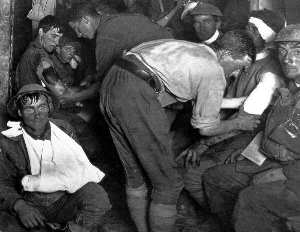
Today you are unlikely to find the term shell shock. Generally thought now to be known ‘blast injury’.
And while there are differing opinions it is generally thought to be brain injury.
An outline of the specific nature and investigation of blast injuries can be found on BrainLine Military in an article Military Traumatic Brain Injury: An Examination of Important Differences (Louis M. French, Annals of the New York Academy of Sciences)
“Managing traumatic brain injury secondary to explosions” Burgess P, Sullivent EE, Sasser SM, Wald MM, Ossmann E, Kapil V. Managing traumatic brain injury secondary to explosions. J Emerg Trauma Shock 2010;3:164-72).
Provides insights into blast injuries and the history of soldiers with brain injury. Linking “shell shock” to the modern day diagnosis of “blast injury” and linking both to damage to the brain.
And Finally
 I learned that young people are still sent off, on behalf of their country, to fight in wars. On return home many are still left without the lifelong support they need to live a full and meaningful life.
I learned that young people are still sent off, on behalf of their country, to fight in wars. On return home many are still left without the lifelong support they need to live a full and meaningful life.
It is my hope that if we can’t stop conflict, we can at least provide those soldiers with brain injury and other injuries of war, the long term treatment and support they need.
Please share your own thoughts and resources with us.

